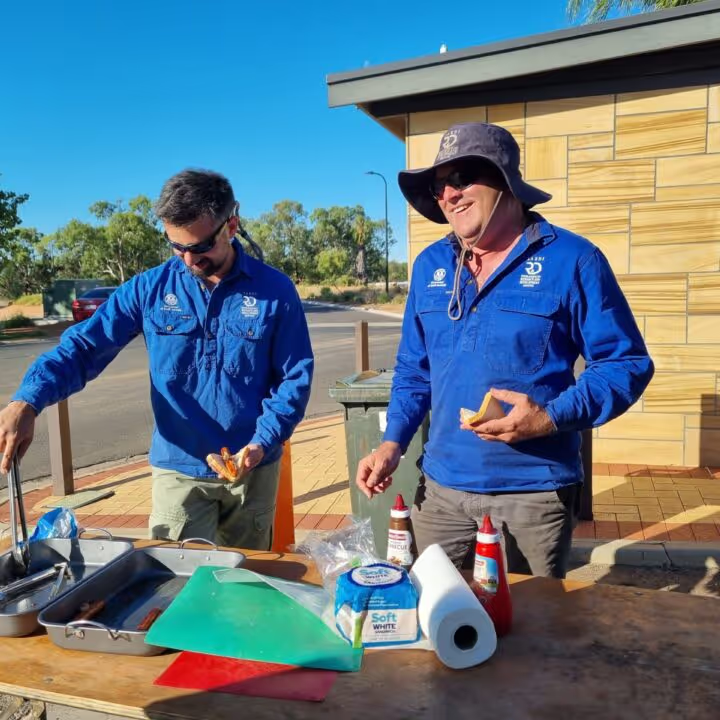On the 1st of March 2023, the Lower Murray Flow-MER team held an Electrofishing Field Demonstration in Renmark.
Recreational fishers in the Riverland have expressed strong interest in seeing electrofishing in action, and the demonstration aimed to raise community awareness of this common and important fish sampling method.
Around 70 attendees had a chance to learn from researchers from the South Australian Research and Development Institute (SARDI), who were conducting electrofishing for the Flow-MER Project in the Lower Murray River. A brief introduction to electrofishing was given by Chris Bice, a freshwater fish ecologist from SARDI. He explained how the method generates a field of electricity in the water which temporarily stuns fish in the immediate vicinity (about five metres). The stunned fish are scooped up with a dip net, measured, tagged, and returned to the water safely.
Mr Bice detailed the many advantages of using electrofishing, including capturing fish of varying sizes and allowing for rapid surveys. Most importantly, stunning is only temporary, and fish can be returned to the water unharmed. When performed correctly, electrofishing is safe for fish, and for humans operating the electrofishing unit.


During the day, attendees were able to get a close look at the electrofishing unit on Henri, one of SARDI’s electrofishing boats, while it was anchored on the riverbank of the Jane Eliza Reserve.
They then split into smaller groups, boarded pontoon boats and headed to the sampling sites to watch the demonstration.
Researchers onboard Henri fished at a safe distance from the pontoon boats. Mr Bice and SARDI Inland Waters and Catchment Ecology Program Leader, Associate Professor Qifeng Ye, explained the details of electrofishing as it was happening, and answered the many questions asked by the public.
After five to 10 minutes of electrofishing and scooping fish out of the water, Henri and his crew joined the pontoon boats, where researchers demonstrated how they identify, measure and tag fish.
Participants clearly enjoyed watching the sampling method in action. Some were surprised by the targeted nature of the technique, with fewer fish caught than expected.


They were also impressed by the number of species caught. This included small-bodied native species (including unspecked hardyhead and Murray rainbowfish) and introduced species (such as eastern gambusia) they had never seen before, as well as a healthy, large golden perch and introduced species like redfin, goldfish and common carp.
After the demonstration was completed, many people stayed for a barbecue and mingled with researchers and other members of the public.
We were grateful to receive a lot of positive feedback, both on the day and on social media following the event.


Running an engagement initiative where participants joined scientists in the field helped us bridge knowledge gaps and bust myths about electrofishing.
Such a successful initiative is a team effort, and our thanks go to all involved, namely:
- Commonwealth Environmental Water Holder (CEWH) for supporting and funding this activity
- The recreational fishers who helped organise the event
- The Renmark-Paringa Council events team who helped us gain council approval
- The Berri sub-branch of the Riverland Field Days group for cooking the barbecue
- Riverland Boat Hire for their amazing service
- Calperum Station, Loxton Men’s Probus Group, the Department for Environment and Water, and the Murraylands and Riverland Landscape Board for their support

We hope to hold similar events in the future, as they are a great way to engage with the public, including recreational fishers and First Nations groups. They also provide a valuable opportunity to promote the CEWH’s Flow-MER Program as well as research work conducted by SARDI and the broader Lower Murray team.
In a further effort to improve the community’s understanding of electrofishing, we have added a dedicated electrofishing page to the Lower Murray section of the Flow-MER website, explaining how it works, the types of electrofishing, and why the method is safe.



.JPG)

.webp)